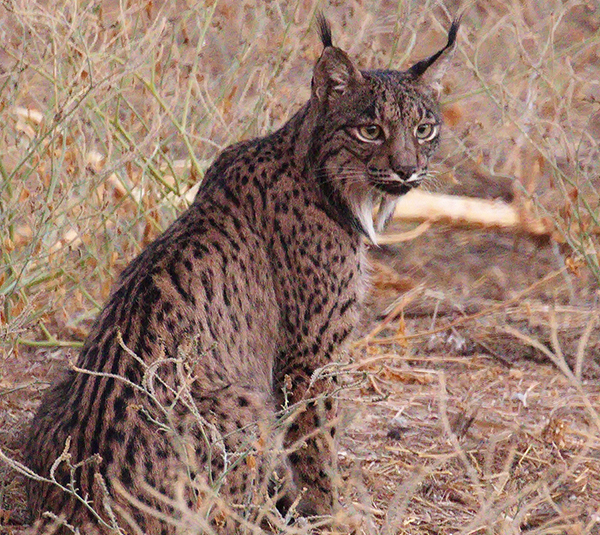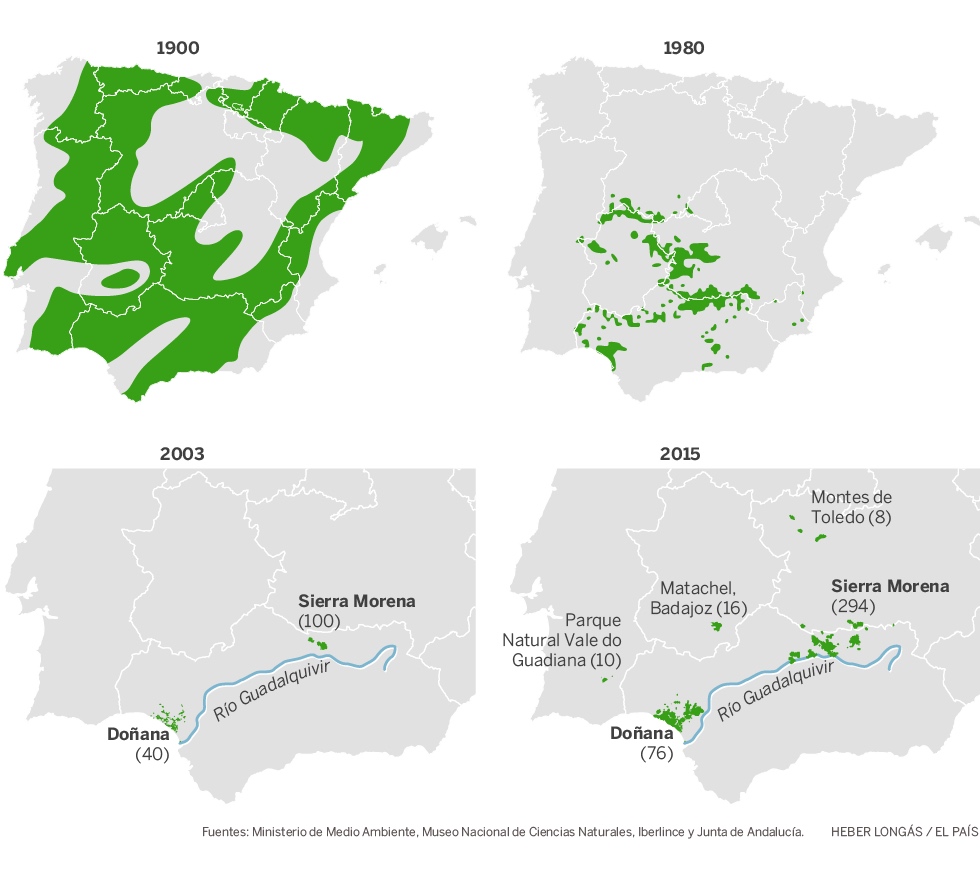Conservation Success: Recovery of Endangered Iberian Lynx
Posted by Gerald Broddelez
in Europe
Apex expedition leader, Gerald Broddelez, provides this update on the recovery of the Iberian Lynx. Thanks to Spain’s conservation efforts, Apex travelers were able to see this endangered cat on our recent Spain’s Wilderness expedition. Read more!
Spotting the Iberian Lynx
Our first Apex Spain’s Wilderness expedition had almost come to an end. We had had great views of all our main targets so far with Cantabrian Brown Bear, Wolf and Spanish Ibex among the highlights. Our last stretch of the journey was spent along the warm valleys of the Andújar River with high hopes of seeing the rarest cat in the world, the Iberian Lynx.
We had already glimpsed the mighty hunter walking off into the sagebrush ahead of us as we explored the Coto Doñana National Park by 4×4. Still, we were anxious to have better and more prolonged looks.
We were not going to be disappointed! One evening, we were treated to more than half an hour admiring this beautiful cat at close range from one of our favorite lookouts. The warm evening light gave us the opportunity to study the Iberian Lynx in detail and allowed for some close up shots!
Iberian Lynx – History and Future
The Iberian Lynx is just over 3 feet long and weighs around 22 pounds, twice the size of a Wildcat (which we also stand a good chance of seeing on this trip).
The Iberian Lynx is a rare mammal. Its numbers have recovered to over 400 in the wild from the critical level of 65 at the start of this century, thanks to an intensive captive breeding scheme.
Iberian Lynx were first released at two sites in central and southern Spain. But now with numbers on the rise, Lynx have been released in five different places in Spain and neighboring Portugal, deemed sufficiently remote. However, they often travel large distances after being released, exposing them to greater risks, particularly from traffic. One individual was seen less than 20 miles away from the city center of Madrid! Sadly, last year more than 20 were killed on Spain’s roads.
To better understand and follow the released animals, a deal has been signed between a technology consortium and the Andalusian regional government to design an aerial tracking system using drones.
Recent DNA studies
Spanish scientists have also sequenced the genome of the Iberian Lynx, and have confirmed the “extreme erosion” suffered by its DNA. The Iberian Lynx has one of the least genetically-diverse genomes. It is even less diverse than other endangered mammals, such as the Giant Panda or Amur Tiger. The Iberian Lynx began to diverge from its sister species, the Eurasian Lynx some 300,000 years ago, and the two species became completely separated some 2,500 years ago.
The demographic history of the Iberian Lynx has been marked by three historic declines, the last of which took place some 300 years ago, decimating its population. In addition, there was a drastic drop in numbers in the 20th century due to persecution, destruction of habitat, and major viral epidemics suffered by the rabbit, its main food source.
Scientists have interpreted these demographic drops as the cause of the low levels of diversity observed, and warn that this could impair the Iberian Lynx’s capacity to adapt to changes in its environment. Furthermore, existence of multiple, potentially harmful, genetic variants has been confirmed, which could be contributing to the reduced survival and reproduction rates of the species.
Nevertheless, the study reflects the situation before the exchange between the two relict populations and their inter-breeding in captivity had begun. These measures, taken within the Iberian Lynx conservation program, have led to improvement of the species’ genetic situation in recent years. The use of new genomic resources, will contribute to management aimed at preserving the greatest genetic diversity, and hopefully result in even bigger numbers of Iberian Lynx in the future.
Lynx spotting has become an opportunity for conservation tourism in the area. In addition to creating 30 full-time jobs, forestry work carried out under the program has provided much-needed work for hundreds of small businesses in the area.
Learn more
To learn more about discovering Spain’s wildlife, visit our Spain’s Wilderness expedition page.


